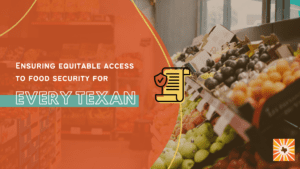
Government Shutdown Impact on Texas SNAP: What To Expect and Do Today
Twitter Facebook Linkedin Updated Nov. 6, 2025 As we enter week six of the federal government shutdown, the longest in our nation’s history, 3.5 million Texans who rely on SNAP
“...the percentage of meals that were claimed as free were a lot higher than when we were in Provision 2.”
Rio Grande City CSD
Direct certification is a federally mandated electronic data-matching process that determines the eligibility for free school meals based on student participation in other need-based programs.

Schools have the chance to boost participation in school meal programs, feeding more kids more efficiently through the use of direct certification.
Students are eligible for school meals through direct certification if they meet any of these criteria:
Direct certification helps students from low-income families who are at a higher risk for hunger. All directly certified students get free school breakfast and lunch. Students who have access to better nutrition tend to perform better academically. Efficient direct certification can allow schools to feed more kids healthy food, ease the burden on low-income parents, and improve focus and learning for all students.
Direct certification is also an efficient process for families and the school meals system. When a student is directly certified, schools no longer have to collect meal applications from parents. This saves parents and school administrators time and allows for a uniform and efficient method for eligibility determinations. Direct certification makes school meals processes less burdensome for schools, parents, and students, and it also helps capture eligible students who may have been “missed” or unidentified under the meal application system.
Districts that have improved their direct certification rates have been able to spend less effort on collecting applications while increasing their school food revenue. They can use the added revenue to pay staff, buy equipment, or improve food quality.

Twitter Facebook Linkedin Updated Nov. 6, 2025 As we enter week six of the federal government shutdown, the longest in our nation’s history, 3.5 million Texans who rely on SNAP

Twitter Facebook Linkedin View the full report as a PDF. Congress has been directed to cut $880 billion from the Health and Human Services budget and another $230 billion from

Twitter Facebook Linkedin As Texas dives headlong into its 89th legislative session, all eyes are on the Capitol. However, we don’t want to lose the forest for the trees. Texas

Twitter Facebook Linkedin As a centerpiece of his War on Poverty, President Lyndon B. Johnson signed the Food Stamp Act of 1964 on August 31 of that year. Now known